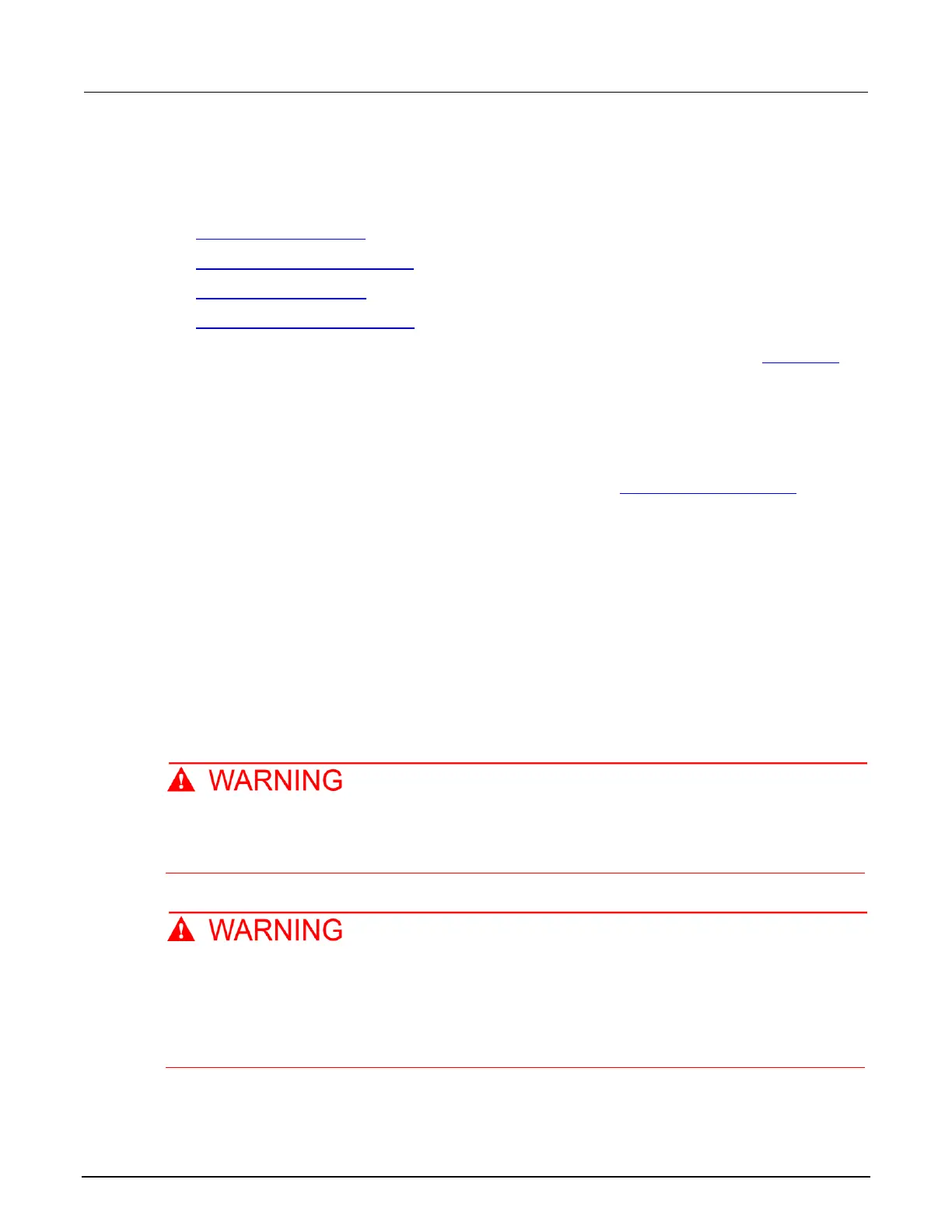Performing the calibration test procedures
Perform the following calibration tests to make sure the instrument is operating within specifications:
• Current source accuracy (on page 10-6)
• Current measurement accuracy (on page 10-9)
• Voltage source accuracy (on page 10-12)
• Voltage measurement accuracy (on page 10-14)
If the 2600B is not within specifications and not under warranty, see the procedures in Adjustment (on
page 10-15) for information on adjusting the instrument.
Test considerations
When performing the calibration procedures:
• Be sure to restore factory front panel defaults as described in Restoring factory defaults (on
page 10-4).
• Make sure that the test equipment is properly warmed up and connected to the 2600B output
terminals. Use 4-wire sensing for voltage.
• Make sure the 2600B SMU is set to the correct source range.
• Be sure the 2600B SMU output is turned on before making measurements.
• Be sure the test equipment is set up for the proper function and range.
• Allow the 2600B SMU output signal to settle before making a measurement.
• Do not connect test equipment to the 2600B through a scanner, multiplexer, or other
switching equipment.
The maximum common-mode voltage (voltage between LO and chassis ground) is 250 V dc.
Exceeding this value may cause a breakdown in insulation, creating a shock hazard that
could result in personal injury or death.
The FORCE and SENSE connectors of the 2600B are rated for connection to circuits rated
Measurement Category I only, with transients rated less than 1500 V
PEAK
. Do not connect the
2600B terminals to CAT II, CAT III, or CAT IV circuits. Connections of the input/output
connectors to circuits higher than CAT I can cause damage to the equipment or expose the
operator to hazardous voltages.

